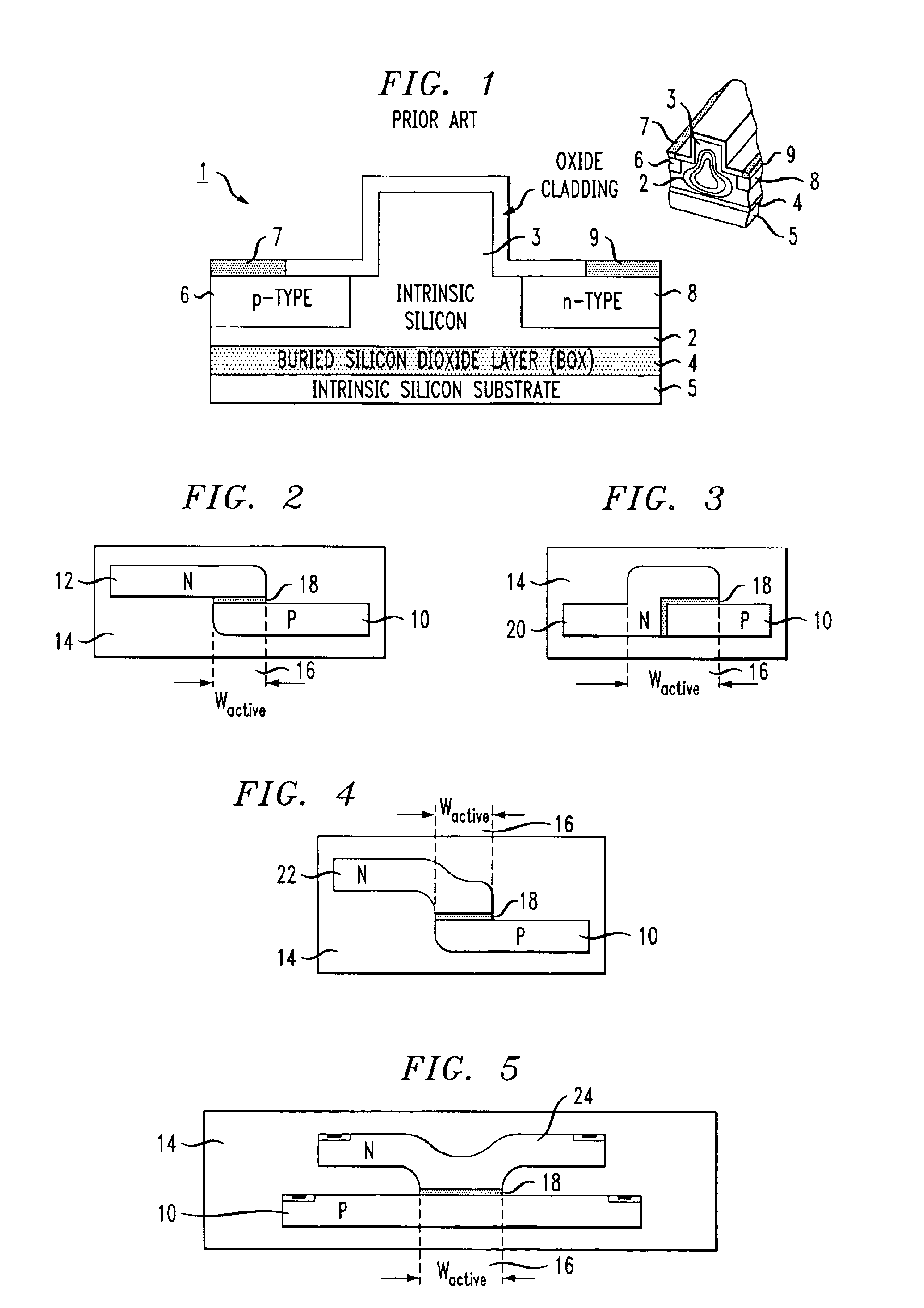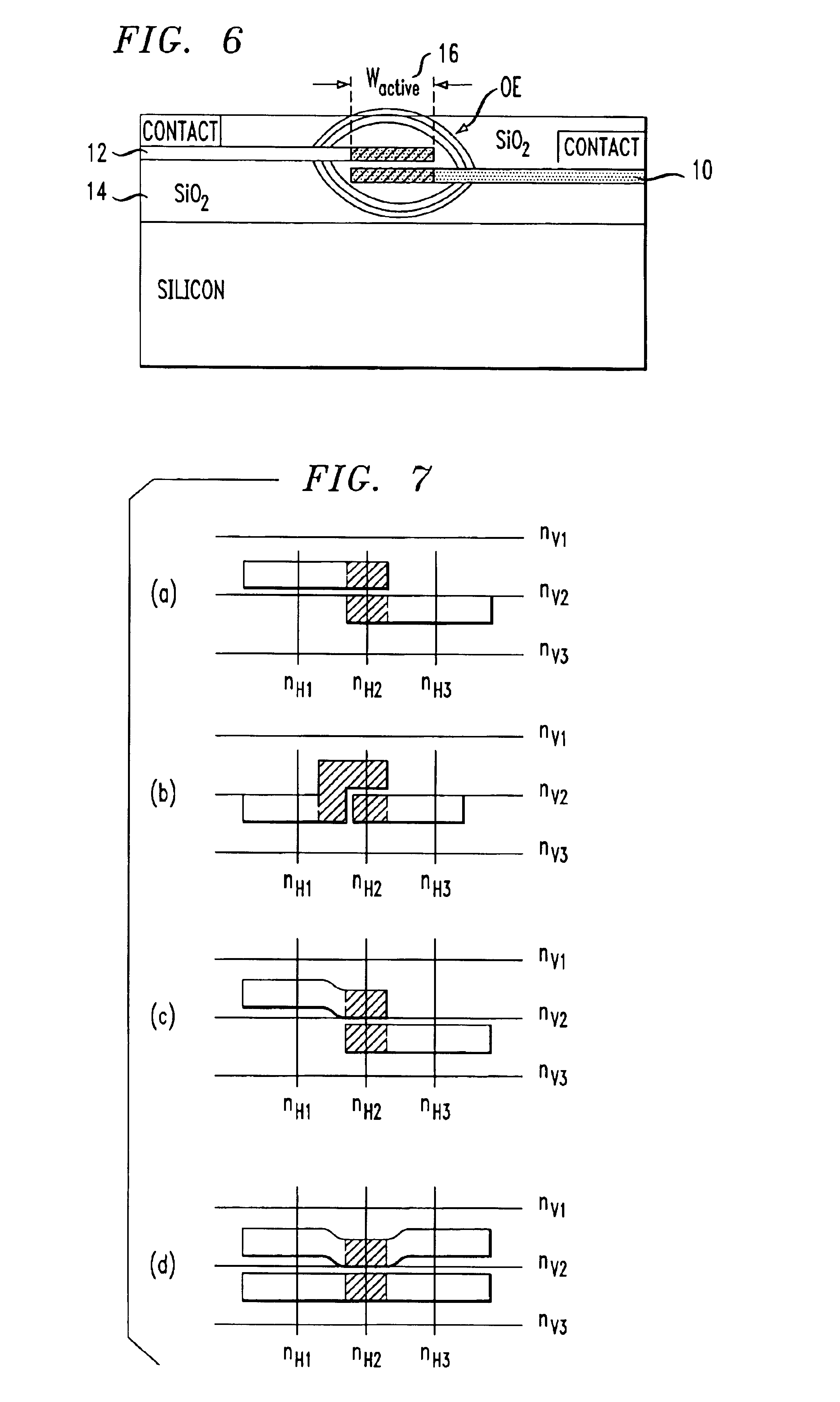High-speed silicon-based electro-optic modulator
a modulator and silicon-based technology, applied in the field of silicon-based electrooptic modulators, can solve the problems of reducing the effectiveness of the modulator, reducing the efficiency of the modulator, and slow thermal effect, so as to reduce the optical loss, reduce the series resistance, and reduce the effect of optical loss
- Summary
- Abstract
- Description
- Claims
- Application Information
AI Technical Summary
Benefits of technology
Problems solved by technology
Method used
Image
Examples
first embodiment
With this basic understanding of various aspects of the present invention, FIG. 8 illustrates an electro-optic modulator device 30 formed in accordance with the present invention. It is to be understood that there exist various processing techniques that may be used to form the device as shown. The present invention is directed to the utilization of the unique overlap of the optical electric field and free carrier areas by virtue of the SISCAP structure exhibiting inherent, effective index guiding. Accordingly, the inventive structure may be formed using any acceptable process sequence that yields the various device elements, element positions and associated doping levels required for acceptable operation. In each case, the basis of the present invention is the utilization of an SOI wafer, incorporating the modulator elements within and above the relatively thin, sub-micron surface silicon layer to form a SISCAP structure, while also advantageously utilizing the buried oxide (or die...
second embodiment
FIG. 13 illustrates an electro-optic modulator formed in accordance with the present invention. Electro-optic modulator 60 as shown in FIG. 13 utilizes the gate region geometry as discussed above in association with FIG. 3. In particular, modulator 60 comprises relatively thin n-type gate region 20 and relatively thin p-type body region 10, where p-type region 10 is formed by implanting a dopant such as boron to form regions 36, 40 and 44. Region 42 is preferably a silicide, such as tantalum, cobalt, nickel, molybdenum, tungsten or titanium silicide. After appropriately etching region 10, the gate dielectric 18 is formed and region 20 is deposited in one or multiple layers using implantation of a dopant such as phosphorous, arsenic or antimony to form portions 48, 52 and 53. As with contact 42, contact 50 is also preferably formed from a silicide. Similar to modulator 30 of FIG. 8, modulator 60 of FIG. 13 includes portions 36 and 53 that are more lightly doped (or even undoped) than...
PUM
| Property | Measurement | Unit |
|---|---|---|
| thickness | aaaaa | aaaaa |
| voltage | aaaaa | aaaaa |
| length | aaaaa | aaaaa |
Abstract
Description
Claims
Application Information
 Login to View More
Login to View More - R&D
- Intellectual Property
- Life Sciences
- Materials
- Tech Scout
- Unparalleled Data Quality
- Higher Quality Content
- 60% Fewer Hallucinations
Browse by: Latest US Patents, China's latest patents, Technical Efficacy Thesaurus, Application Domain, Technology Topic, Popular Technical Reports.
© 2025 PatSnap. All rights reserved.Legal|Privacy policy|Modern Slavery Act Transparency Statement|Sitemap|About US| Contact US: help@patsnap.com



